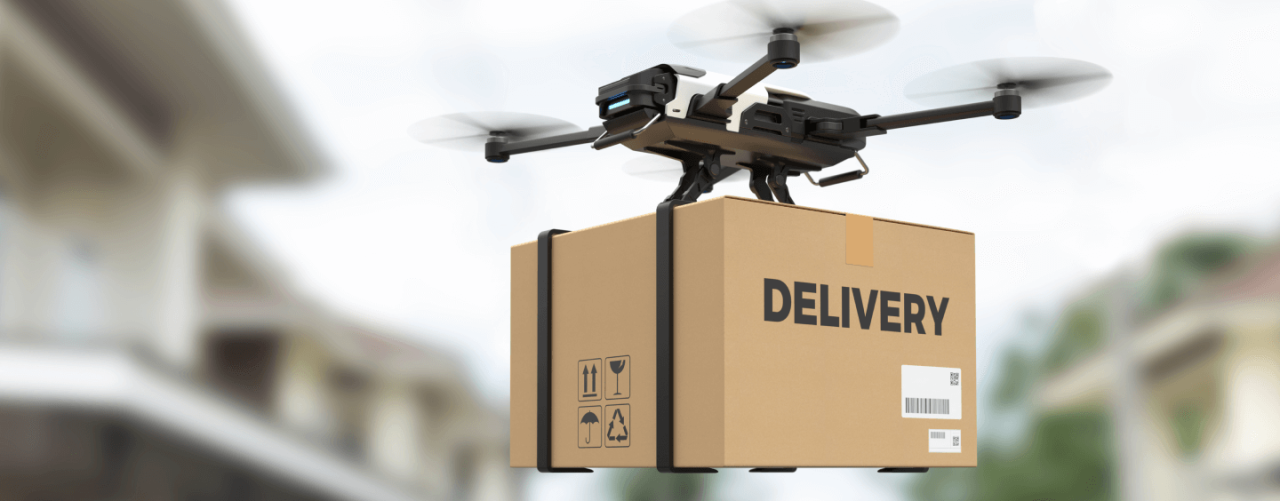Drohnen übernehmen den E-Commerce-Versand - sind Sie bereit?
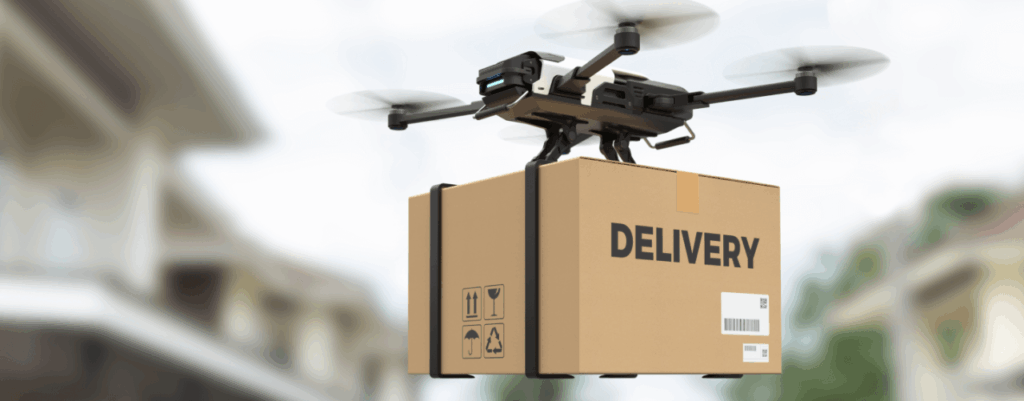
Können Drohnen wirklich etwas verändern? E-Commerce-Versand und die größten Herausforderungen bei der Zustellung für Unternehmen zu lösen? Was einst futuristisch erschien, wird nun zu einem praktischen Bestandteil der modernen Logistik. Einzelhändler und Lieferunternehmen testen Drohnenflotten, um die Zustellung auf der letzten Meile zu beschleunigen, Kosten zu senken und die steigenden Kundenerwartungen an einen nahezu sofortigen Service zu erfüllen. Der Wandel findet bereits statt - sind Sie bereit, sich anzupassen?
Warum werden Drohnen für den E-Commerce-Versand unverzichtbar?
Der elektronische Handel hat die Einstellung der Kunden zur Lieferung verändert. Die Menschen wollen ihre Pakete innerhalb von Stunden, nicht von Tagen. Herkömmliche Zustellmethoden sind aufgrund von Verkehr, Arbeitskräftemangel und Treibstoffkosten schwierig. Drohnen lösen diese Probleme, indem sie Folgendes bieten:
- Schnellere Lieferung: Lokale Bestellungen werden innerhalb von 30-60 Minuten geliefert
- Effizienz: Keine verkehrsbedingten Verzögerungen oder Umleitungen
- Kostensenkung: Geringere Kraftstoff- und Arbeitskosten
- Erreichbarkeit: Fähigkeit, ländliche oder schwer zugängliche Gebiete zu erreichen
Unternehmen wie Amazon, UPS und DHL führen bereits Drohnenprogramme ein und zeigen damit, dass der Versand per Drohne im E-Commerce mehr als nur ein Konzept ist.
Wie können Drohnen das Problem der Zustellung auf der letzten Meile verbessern?

Warum ist die letzte Meile so teuer?
Die letzte Meile macht mehr als die Hälfte der gesamten Versandkosten aus. Die Gründe dafür sind unter anderem:
- Wenige Pakete pro Route, was die Effizienz jeder Zustellung verringert
- Steigende Kraftstoffkosten sorgen für Unsicherheit
- Der Stadtverkehr verursacht ständige Verzögerungen
Wie können Drohnen dieses Problem lösen?
Die Drohnen fliegen direkt vom Drehkreuz zum Kunden nach Hause. Die Vorteile umfassen:
- Direkte Routen ohne Verkehrsbeeinträchtigung
- Skalierbarkeit durch gleichzeitige Drohneneinsätze
- Verbesserte Zufriedenheit von schnellerem Service
Dadurch wird der Versand im E-Commerce kostengünstiger und erfüllt gleichzeitig die Erwartungen der Kunden.
Sind Drohnen für Lieferungen sicher und verlässlich?
Sicherheitsaspekte
Die Menschen machen sich oft Sorgen, dass Drohnen mit Gegenständen kollidieren oder Risiken verursachen könnten. Um dies zu vermeiden, verfügen Drohnen jetzt über Funktionen wie:
- Geofencing: Eine in das System der Drohne einprogrammierte digitale Grenze, die verhindert, dass die Drohne in Sperrgebiete wie Flughäfen, Militärzonen oder belebte Stadtzentren eindringt. Dadurch wird das Risiko von Unfällen an sensiblen Orten verringert.
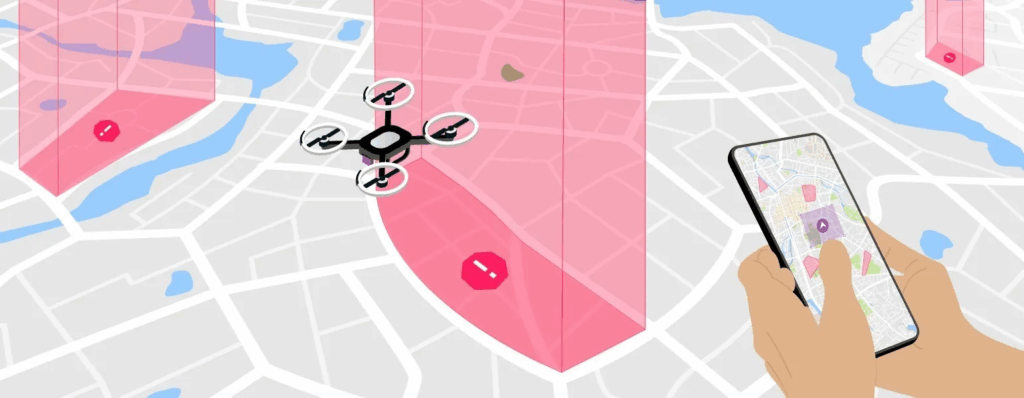
- Hinderniserkennung: Sensoren wie Kameras, Radar oder LiDAR die der Drohne helfen, Bäume, Gebäude, Stromleitungen oder andere Flugobjekte zu erkennen und zu vermeiden.
- Automatisierte Notlandungen: Eine eingebaute Sicherheitsfunktion, die es den Drohnen ermöglicht, sicher auf dem Boden zu landen, wenn sie die Verbindung verlieren, der Akku ausfällt oder während des Fluges unerwartete Probleme auftreten.
Verlässlichkeitsfaktoren
- Witterungsbeständigkeit für leichten Regen und Wind
- Längere Lebensdauer der Batterie von fortschrittlicher Lithium-Ionen-Technologie
- Präzise Navigation mit GPS
Diese Fortschritte zeigen, dass Drohnen bald die Zuverlässigkeit des Bodentransports erreichen können.
Welche regulatorischen Herausforderungen müssen Unternehmen berücksichtigen?
Warum Vorschriften wichtig sind
Luftraumkontrolle, Datenschutz und Sicherheit sind bei der Einführung von Drohnen entscheidend. Jede Region hat ihre eigenen Regeln.
Aktuelle Verordnungen
Vereinigte Staaten: Federal Aviation Administration (FAA)
Die FAA in den Vereinigten Staaten erlaubt Jenseits der Sichtlinie (BVLOS) Drohnenflüge im Rahmen einer Genehmigung, die Sicherheitsinstrumente wie Remote ID und Hinderniserkennung erfordert. Dieser Schritt ist für die Skalierung des E-Commerce-Versands unerlässlich.
Europa: Agentur der Europäischen Union für Flugsicherheit (EASA)

Die EASA legt einheitliche EU-Vorschriften fest und unterteilt die Nutzung von Drohnen in Offen, spezifisch und zertifiziert Kategorien. Diese Konsistenz unterstützt den grenzüberschreitenden E-Commerce-Versand.
Asien-Pazifik-Raum: China und Japan
Die chinesische Zivilluftfahrtbehörde (CAAC) unterstützt die Lieferpiloten von JD.com und SF Express in ländlichen Gebieten. Gleichzeitig ermöglicht Japans Japan Civil Aviation Bureau (JCAB) Stufe 4 Beyond Visual Line of Sight (BVLOS) in besiedelten Gebieten, um einen schnellen, lokalen E-Commerce-Versand zu ermöglichen.
Was dies für Unternehmen bedeutet
Um Verzögerungen bei der Einführung der Drohnentechnologie zu vermeiden, ist es wichtig, sich über die Gesetze auf dem Laufenden zu halten und mit zugelassenen Logistikanbietern zusammenzuarbeiten.
Werden Drohnen die Versandkosten im E-Commerce senken?
Die Kosten werden wegen der hohen Anfangsinvestitionen in Flotten und Infrastruktur nicht sofort sinken. Aber die langfristigen Einsparungen sind eindeutig:
- Einsparung von Arbeitskräften: Weniger Fahrer erforderlich
- Energie-Effizienz: Elektrizität ist billiger als Benzin
- Häufigere Bestellungen: Schnellere Lieferung fördert Wiederholungskäufe
Für Unternehmen mit hohem Versandaufkommen können diese Vorteile erheblich sein.
Wie werden Drohnen die Kundenerwartungen verändern?
Die Verbraucher erwarten bereits einen kostenlosen und schnellen Versand. Drohnen werden diese Erwartungen noch weiter steigern.
Schlüsselverschiebungen
- Ultra-schnelle Lieferung: Kunden können Bestellungen in weniger als einer Stunde erwarten
- Nachverfolgung: Drohnenverfolgung und -aktualisierung in Echtzeit wird zum Standard
- Nachhaltigkeit: Umweltbewusste Käufer bevorzugen vielleicht Drohnen statt Lkw
Drohnen werden Geschwindigkeit und Transparenz in den Mittelpunkt des E-Commerce-Versands stellen.
Was sind die ökologischen Vorteile des Drohnenversands?
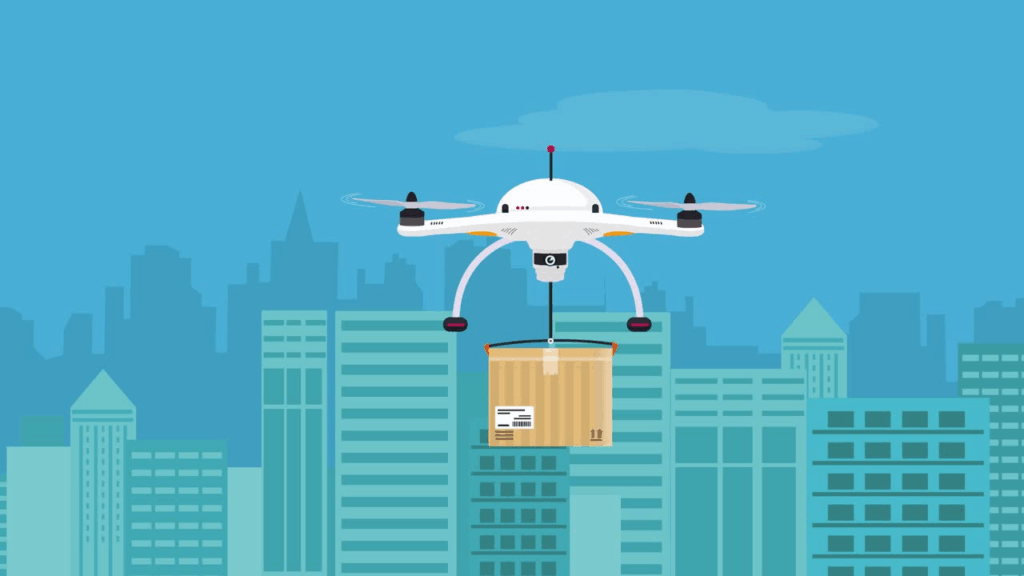
- Geringere Emissionen aus elektrischer Energie im Vergleich zu kraftstoffbetriebenen Fahrzeugen
- Weniger Staus auf den Straßen von weniger Lkw und Transportern
- Nachhaltige Infrastrukturwie Solartankstellen, wird getestet
Für Marken, die sich auf umweltfreundliche Praktiken konzentrieren, unterstützen Drohnen sowohl die ökologische Verantwortung als auch eine größere Marktattraktivität.
Welche Herausforderungen könnten die Einführung von Drohnen verzögern?
Trotz eindeutiger Vorteile bleiben einige Herausforderungen bestehen:
- Nutzlastgrenzen: Die meisten Drohnen tragen nur 2-5 kg
- Einschränkungen der Reichweite: Die Flugdistanz ist auf 30 km begrenzt.
- Beschwerden über Lärm von Gemeinden
- Hohe Einrichtungskosten für kleinere Einzelhändler
Die Unternehmen müssen diese Faktoren gegen die langfristigen Vorteile abwägen.
Wie können sich Unternehmen auf den drohnengestützten Versand im E-Commerce vorbereiten?
Die Vorbereitung von heute sichert die Wettbewerbsfähigkeit von morgen.
Praktische Schritte
- Analysieren Sie die Produkte die den Gewichtsgrenzen für Drohnen entsprechen
- Partnerschaften bilden mit Logistikunternehmen, die Drohnenlieferungen testen
- Infrastruktur aufbauen wie lokale Mikro-Lagerhäuser
- Gleisvorschriften und bevorstehende Genehmigungen
- Marktvorteile für die Kunden, einschließlich Schnelligkeit und Umweltfreundlichkeit
Durch eine frühzeitige Einführung sind die Unternehmen in der Lage, bei der Innovation im Bereich des E-Commerce-Versands eine Vorreiterrolle zu spielen, anstatt hinterherzuhinken.
Welche Rolle werden Daten und KI bei der Zustellung per Drohne spielen?
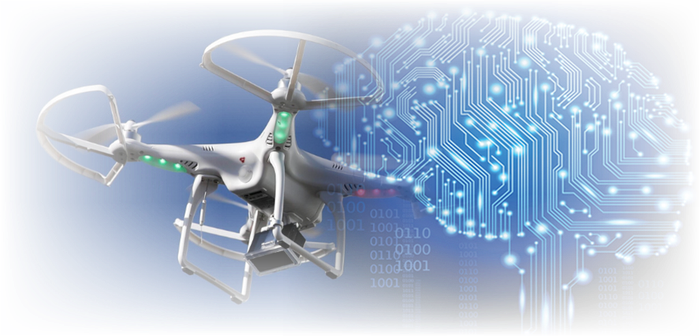
Bei der Zustellung per Drohne geht es nicht nur um Maschinen, die Pakete fliegen. Sie stützt sich stark auf Daten und künstliche Intelligenz. Die KI hilft Drohnen, Hindernissen auszuweichen, Routen optimierenund mehrere Lieferungen auf einmal zu verwalten. Für den E-Commerce-Versand bedeutet dies:
- Intelligenteres Routing die Sperrzonen und schlechtes Wetter vermeidet
- Prädiktive Analytik Vorhersage der Nachfrage und Positionierung von Drohnen in Kundennähe
- Verbesserte Effizienz durch Lernen aus Liefermustern und kontinuierliche Anpassung
Mit der Weiterentwicklung der KI könnten Drohnenflotten fast vollständig autonom werden, so dass der Bedarf an menschlicher Aufsicht sinkt.
Können kleine Unternehmen vom Drohnenversand profitieren?
Viele gehen davon aus, dass Drohnenlieferungen nur für Großunternehmen in Frage kommen. Doch auch kleinere Einzelhändler können profitieren, wenn die Dienstleister gemeinsame Drohnennetze. Dadurch können mehrere Unternehmen dieselbe Drohneninfrastruktur nutzen, was die Kosten senkt. Für kleine Unternehmen ergeben sich unter anderem folgende Vorteile:
- Schnellere lokale Lieferungen ohne Investitionen in Flotten
- Zugang zu unterversorgten Gebieten die große Fluggesellschaften ignorieren können
- Wettbewerbsvorteil indem sie mit der Geschwindigkeit größerer Konkurrenten mithalten
Gemeinsame Drohnenlösungen könnten die Wettbewerbsbedingungen im E-Commerce-Versand ausgleichen und es kleinen Unternehmen ermöglichen, effektiver zu konkurrieren.
Schlussfolgerung: Sind Sie bereit für die Drohnen-Ära im E-Commerce-Versand?
Drohnen sind nicht länger ein Experiment - sie gestalten die Zukunft des E-Commerce-Versands. Schnellere Lieferung, geringere Kosten und Nachhaltigkeit sind klare Vorteile, während Vorschriften, Nutzlastbeschränkungen und Vorabinvestitionen weiterhin Hindernisse darstellen. Unternehmen, die jetzt Maßnahmen ergreifen, werden sich in einer sich schnell verändernden Logistiklandschaft als führend erweisen.
Erfahren Sie mehr über innovative E-Commerce-Versandlösungen unter Postpaket.
Einblicke in die Industrie
Nachrichten über den Posteingang
Nulla turp dis cursus. Integer liberos euismod pretium faucibua

